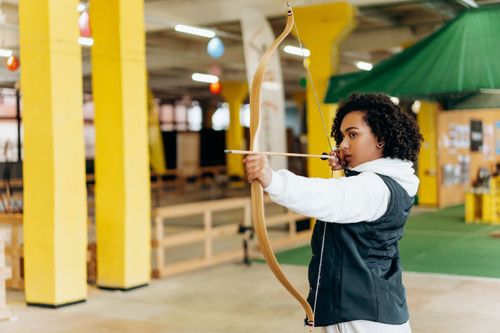Everything You Need to Know about Bow String Anatomy
Posted by Mackenzie Brown on Apr 11th 2022
There are many parts to a bow string. Some strings are complex, and others are pretty straight forward. In this blog post we will be going over the parts of a bow string and their functions.
Strands
A bow string is made up of many strands of material that are wrapped around four posts when built. These strands are pulled into one long loop that are twisted together to make one string. The types of materials used to make the string can vary based on the desired elasticity. 60X offers a massive variety of custom bowstring colors and color combinations for your custom strings.
Need inspiration for choosing a color combo? Check out the 60X Bowstring Color Gallery.
Serving
Serving is another form of string, but it is wrapped around the strands at tension. Serving is more durable than the string fibers and is used to protect the string where it contacts your bow. Serving is also used to tie in your peep sight, tie nocking points, and secure equipment installed on your bow string. Serving is available in multiple diameters to help you get the perfect nock fit. Like the strands, the serving color is up to you to customize to your specifications.
Need help deciding on a color combo? Check out this blog post.
D-loop
If you are a compound shooter, you use a d-loop to help with accuracy and consistency in how the string has contact with your nock. A d-loop is tied on your string above and below your arrow’s nock. There are a few different types of d-loop material; some are stiffer and some more pliable based on your personal preferences. D-loop material is also available in an array of colors. Interested in learning more about D-loop? Check out these articles: Placement of D-loops for Compound Bows & Styles of D-loops for Compound Bows.
Loops
Loops are at either end of a string because a string, as a whole, is an endless loop. These loops are used to attach your string to your cams or limb tips based on what type of bow you shoot. On a recurve string there is a larger loop on the top and a smaller loop on the bottom. The difference in the loops is to show which way your string fastens to the bow, and to help you string your recurve bow. On a compound bow the loop size is made to fit the cams and safely secure the strings and cables to your bow.
Know Your Bow
There are many different sizes and shapes of strings based on the type of bow you shoot as well as the cams you use for compound shooters. Make sure when you order your custom strings you know the lengths of your strings, or all of your bow specifications, to make sure that you get the correct set of strings. This will enable you to get out there and perform your very best.
Not sure how to order your 60X bow strings? Check out this blog post.
If you’re still confused about bowstrings, 60X can answer your questions via chat or over the phone. Reach out and a customer service rep will be happy to assist you.
Never miss a new blog post from 60X. Sign up for our newsletter and the newest blog post will drop into your email.







